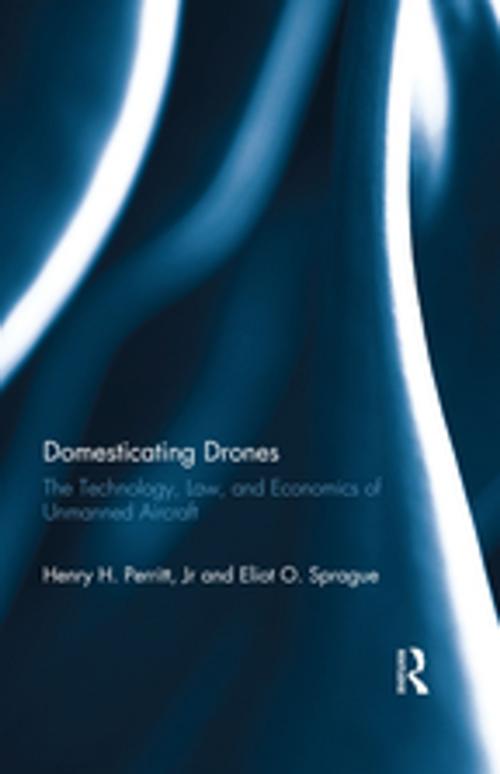Domesticating Drones
The Technology, Law, and Economics of Unmanned Aircraft
Nonfiction, Science & Nature, Technology, Aeronautics & Astronautics| Author: | Eliot O Sprague, Henry H Perritt, Jr. | ISBN: | 9781317148357 |
| Publisher: | CRC Press | Publication: | September 13, 2016 |
| Imprint: | Routledge | Language: | English |
| Author: | Eliot O Sprague, Henry H Perritt, Jr. |
| ISBN: | 9781317148357 |
| Publisher: | CRC Press |
| Publication: | September 13, 2016 |
| Imprint: | Routledge |
| Language: | English |
The public debate over civilian use of drones is intensifying. Variously called "unmanned aircraft systems", "unmanned aerial vehicles", "remotely piloted aircraft", or simply "drones", they are available for purchase by anyone for a few hundred to a few thousand dollars. They have strikingly useful capabilities. They can carry high-definition video cameras, infrared imaging equipment, sensors for aerial surveying and mapping. They can stream their video in real time. They have GPS, inertial guidance, magnetic compasses, altimeters, and sonic ground sensors that permit them to fly a preprogrammed flightplan, take off and land autonomously, hover and orbit autonomously with the flick of a switch on the DRone Operator’s ("DROPs") console. The benefits they can confer on law enforcement, journalism, land-use planning, real estate sales, critical infrastructure protection and environmental preservation activities are obvious.
However, their proliferation in response to these demands will present substantial risks to aviation safety. How to ensure the safety of drone operations perplexes aviation regulators around the world. They are inexpensive consumer products, unsuited for traditional requirements for manned aircraft costing hundreds of thousands or millions of dollars and flown only by licensed pilots who have dedicated significant parts of their lives and their wealth to obtaining licenses. Regulatory agencies in Europe and Asia are ahead of US regulators in creating spaces for commercial use.
Over the next several years, legal requirements must be crystallized, existing operators of helicopter and airplanes must refine their policy positions and their business plans to take the new technologies into account, and all businesses from the smallest entrepreneur to large conglomerates must decide whether and how to use them. Domesticating Drones offers rigorous engineering, economics, legal and policy theory and doctrine on this important and far-reaching development within aviation.
The public debate over civilian use of drones is intensifying. Variously called "unmanned aircraft systems", "unmanned aerial vehicles", "remotely piloted aircraft", or simply "drones", they are available for purchase by anyone for a few hundred to a few thousand dollars. They have strikingly useful capabilities. They can carry high-definition video cameras, infrared imaging equipment, sensors for aerial surveying and mapping. They can stream their video in real time. They have GPS, inertial guidance, magnetic compasses, altimeters, and sonic ground sensors that permit them to fly a preprogrammed flightplan, take off and land autonomously, hover and orbit autonomously with the flick of a switch on the DRone Operator’s ("DROPs") console. The benefits they can confer on law enforcement, journalism, land-use planning, real estate sales, critical infrastructure protection and environmental preservation activities are obvious.
However, their proliferation in response to these demands will present substantial risks to aviation safety. How to ensure the safety of drone operations perplexes aviation regulators around the world. They are inexpensive consumer products, unsuited for traditional requirements for manned aircraft costing hundreds of thousands or millions of dollars and flown only by licensed pilots who have dedicated significant parts of their lives and their wealth to obtaining licenses. Regulatory agencies in Europe and Asia are ahead of US regulators in creating spaces for commercial use.
Over the next several years, legal requirements must be crystallized, existing operators of helicopter and airplanes must refine their policy positions and their business plans to take the new technologies into account, and all businesses from the smallest entrepreneur to large conglomerates must decide whether and how to use them. Domesticating Drones offers rigorous engineering, economics, legal and policy theory and doctrine on this important and far-reaching development within aviation.















